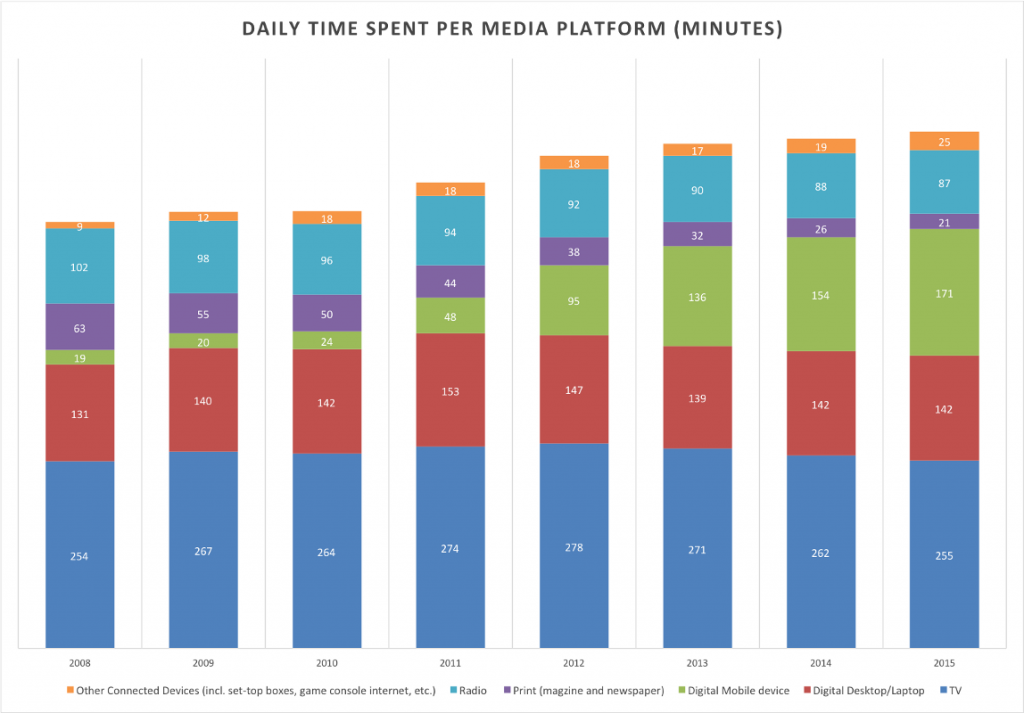It’s amazing how sometimes you look back on things that PDs did several decades ago – not in a nostalgic way, but in an effort to understand why the radio that many people grew up with was so captivating and memorable.
Some say that radio was largely successful in the ‘70s and ‘80s because there was really nothing else to listen to beyond recorded music.
But I would argue that while programmers competed against each other without the distractions and abundance of choice that exist today, they also did so many things right in creating compelling radio that created community and word of mouth.
One example of this is the old “Black Box” contest where stations created a physical box on display at a high visibility spot in the metro area. On the air, they gave clues to help the audience guess the contents of the box.
It was all about getting attention, keeping it, and building that element of surprise.
I thought about the “Black Box” the other day while reading a New York Times article about – you guessed it – “subscription boxes.” That’s right. You pay a monthly fee ($10-$30), and a mystery box shows up filled with an eclectic mix of stuff. Many of these boxes are thematic, so from snacks to wine to dog treats, these cube-shaped treasures show up at your house to delight and amaze.
And in many ways, that feeling of mystery, anticipation, and element of surprise is why these boxes are effective, garnering an increasing number of subscribers.
The other impact of these “black box” promotions and marketing tools is their ability to capture the attention of the mind-addled consumer. Whether it was on the radio in 1977 or available to consumers via the web today, unpredictability and guesswork are ingredients that delight people who often feel overwhelmed by choice or dulled to the hype surrounding “the next big thing.”
And that brings me to a new article in Medium by David Pakman, a VC at Venrock. The title – “May I Have Your Attention, Please?” – tells part of the story. The subtitle – “The currency of the media business is attention. So where are we spending it?” – summarizes the challenge that every content channel faces during these gut-churning times.
The article offers a fascinating amalgamation of stats culled from many different sources. Among other metrics, it breaks down daily time spent in minutes among various media platforms – including radio – since 2008. The light blue segments near the top are radio (and they’re eroding). The green color signifies digital mobile devices, while the red symbolizes desktop and laptops. It is truly amazing what’s occurred in less than a decade. And as you’d imagine, among Gen Y consumers, the movement is hyper-dramatic.
Pakman’s premise is a familiar one, but expressed with a different data set than we’re used to seeing. He notes the usual – that Millennials are stirring the pot, embracing platforms of self-expression and communication. Thus, the many YouTube celebrities, Viners, and other content creators with larger audiences than The New York Times or “Keeping Up With The Kardashians.” He points to social platforms – from Facebook and YouTube to Snapchat and WhatsApp – as outlets that are capturing the engagement of millions of younger consumers.
Backed up by the data, he makes the familiar point that the brands Millennials frequent of a tipoff about the companies that have the greatest likelihood of success and survival.
But for millions of Xers and Boomers, there’s a different battle for attention. These more mature consumers are less cutting edge, continuing to use familiar platforms. But they are less loyal to any of them, flitting around to find something that’s is compelling, interesting, and sticky.
And that sums up the current puzzle the radio industry must unlock. While that much publicized reach threshold remains steady and even enviable, retaining listenership and holding the consumer’s attention goes to the heart of the challenge.
The problem is that the tools, the philosophies, and the tenets that guided radio programming and content creation for decades are often antithetical to what captures and hold attention today. Perfect logs, rock solid predictability, format dependability, and fixed benchmarks are all part of the infrastructure that drives ratings – from the diary to the meter.
But when it comes to enchanting, surprising, and delighting the audience – the emotions that fan the flames of word of mouth and evangelizing – it is about being unpredictable, a surprise here and there, and shaking up the conventional. That’s how you capture attention.
We don’t talk about Bruce. We talk about Caitlyn.
We don’t talk about Jeb. We talk about The Donald.
We don’t talk about Sean Hannity. We talk about Zach Sang.
We don’t talk about caller 9. We talk about the “black box.”
It’s a battle for attention. And that’s a battle radio needs to win.
- Why Radio Needs To Stop Chasing The Puck - November 21, 2024
- Great Radio – In The Niche Of Time? - November 20, 2024
- “Be My 9th Caller Right Now And Win A Free Slurpee!” - November 19, 2024







A few days ago, in the blog “Radio, It’s Red Hot” (August 12), it was mentioned that the next 3 – 5 years will tell if radio can retain its’ relevance with Millennials. The data above, though, not surprising, points towards a continuing erosion. Perhaps bringing back “Black Box” type promotions (ideas used prior to 1982, that aren’t used today) presented in a modern context (by integrating it into a DMD format) could help.
The rush to pump the stock prices has cost most of Corporate Radio its promotion budgets and a whole lot of people that used to make the magic. The related thread in this conversation is advertising our brands. When that stopped, we stopped inviting non-users to give us a listen. That needs to come back too. And last but not least, everyone should keep in mind that people do different things with those other devices. They’re not listening to audio 157 minutes a day on their phones. Radio is still the best way to reach massive numbers of people with a message and we need
Radio’s aversion to do ANY kind of experimentation is perplexing. The time spent that has migrated directly from radio to portable devices is probably more about the programming they can access there than device preference.
When was the last time something that originated on radio went viral?
And the need to this some long passes has never been more important. Last week’s RMI honoree, Zach Sang, is a bright young star. We need more. Thanks for the comment.
Spot-on, Fred. Thanks for another interesting post.
Capturing attention is hard work. It requires creativity. Let me suggest it’s often the little things, the cumulative effect of details, which creates contrast and sustainable differentiation.
One example from the last century. A top of the hour legal id. “This is Tom Donahue, general manager of KSAN in San Francisco. If the disc jockey you’re listening to at this moment has not played a rock n roll record in the past ten minutes, please send me his name and he will be fired.”
What’s required is tenacity, a dedication to staging fresh, creative, memorable takes on everything. It’s not about getting better, it’s about getting different. Doing the common uncommonly well offers a killer ROI. Gordon McLendon often said the daily goal of programming was “Get people to talk about the radio station.” We can do this. It starts with doing the work, going into your stations to commit great radio every day.
Dave, thanks so much. I love your line about not getting better but getting different. The McClendon directive is on the money. too. Appreciate the comment and adding to the conversation.
This problem is simple, but we make solving it very complex.
Since the creation of Radio the driving appeal has been offering ENTERTAINMENT that couldn’t be found anywhere else. From “Make Believe Ballroom” to “American Top 40”, the most successful radio programming has been designed by the creative, the talented, the gifted and often the mildly insane. When was the last time a “cutting edge” format was created on a traditional radio station? We don’t set trends anymore, we borrow from other trends and create half-baked versions of what the real innovators are doing. Hell, we don’t even do much creative music programming on Sunday mornings anymore. I blame deregulation. When Mom and Pops got bought out we turned from a creative entertainment industry into national businesses run by accountants. And respect them as I do, they often feel that creativity isn’t a very good ROI. Big companies don’t embrace the wild geniuses who invented Top 40, Progressive FM, AOR and Classic Rock. Actually quite the opposite. No one dares mention taking a creative risk these days. My hope is that someday soon Big Business will exit Radio and sell off to cut losses. Enterprising business people will buy a couple of stations each and hire the crazies to program one station each. The crazy PDs will hire crazy-job with great talent and a dangerous edge. Competition will be very local again and that has always bred the best Radio. After all, that’s what all these E-based music companies have done. And it’s their desire to be creative and bet on an IDEA that’s causing all the talk. You can deconstruct demos and history all day long, but if you’re not talking about making your station exciting and creative, you’re just “waiting’ on the last train”, as Dylan said. Someone out there still plays Dylan, don’t they?
Jim, as always, your perspective continues to improve as you have the opportunity to look at radio through new lenses. Thanks for continuing to contribute here.
In the spirit of Jim Harper’s comment, radio succeeded for its first 60 or so commercial years by offering interesting stories told by engaging characters. That was true not only for the dramas, soaps and sitcoms of the 30s. 40s and 50s, but also of the music shows of the 60s and 70s. It was magical watching creative DJs transform 30-minute storytelling into a 60-second art. Only when radio, for reasons I still don’t understand, totally forgot about the root cause of its popularity, did the business hit the skids. It’s painful to watch so many otherwise savvy executives and consultants twist their explanations into pretzels in an attempt to avoid the obvious (which, as podcasting demonstrates still works): give listeners interesting stories told by engaging characters and the listeners will come back for more.
A common theme here, Jay. Oftentimes, getting back to radio’s basics – the things that got us to the dance – are the fundamentals necessary in transitioning to the digital age. Thanks for the comment.